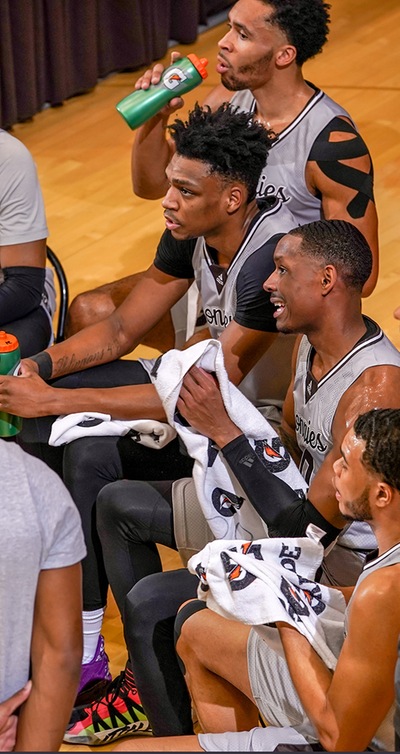
By CHUCKIE MAGGIO
St. Bonaventure women’s basketball players Tori Harris and Nikki Oppenheimer sat on the steps that lead to the Richter Center hardwood and made their initial pitches to be pitchwomen.
“DMs are open for any paid partnerships,” Harris said on an Instagram story.
“DMs are open,” Oppenheimer reiterated.
Harris and Oppenheimer, who boast nearly 10,800 Instagram followers between them, made reference to the NCAA’s new Name, Image and Likeness (NIL) rules that went into effect on Thursday. Every NCAA athlete is now permitted to earn money from endorsements, social media, autograph signings, running a start-up and instructing at sports camps, among other ventures.
Schools are still prohibited from paying players directly, while the legality of some NIL activities varies state-to-state (some states do not allow athletes to endorse alcohol, tobacco or gambling products). But the changes are not only exciting for college athletes; their schools are encouraging them to cash in.
“I honestly believe that every student-athlete will benefit in some way,” St. Bonaventure Senior Associate Athletic Director for Compliance Ryan Clingan remarked. “It might be as simple as free products or as large as a reocurring endorsement. National media will focus on the large-scale deals, but something as simple as ‘SBU Player X’s Camp,’ performed in their hometown during holiday breaks, really opens the door for everyone with Division I talent.
“We are fortunate to have some highly intelligent and innovative students here that will find their own ways to capitalize.”
Athletes are required to disclose their deals to compliance administrators like Clingan, who will ensure no one jeopardizes their eligibility. SBU athletes are currently allowed to work with university sponsors or “boosters” as long as Bona does not organize the deal for them.
New York has introduced a NIL bill but has not passed it yet. Bona, Clingan says, closely followed the framework of the bill when creating its own guidelines. Congress is expected to eventually pass legislation that would create consistency throughout the entire country, but Bonaventure is “self-governing” during NIL’s infancy.
“SBU was very supportive of NIL regarding the opportunities that it presents for our student-athletes,” Clingan commented. “I would say that our department is relieved that the NCAA did not land on an overly restrictive approach. I/we still anticipate that there will be a federal/national approach at some point, but are happy to self-govern or follow New York State until that becomes a reality.”
Clingan said a few different athlete negotiations are ongoing but Bona has not seen its first disclosure yet. There is a seven-day grace period before deals can become official.
A handful of high-profile athletes wasted no time securing lucrative endorsements on Thursday. University of Miami quarterback D’Eriq King landed deals with College Hunks Hauling Junk & Moving and Murphy Auto Group that are reportedly worth around $20,000. Iowa men’s basketball player Jordan Bohannon revealed his new clothing line and made an autograph appearance at a fireworks store. Arkansas tight end Trey Knox and his dog will be part of a PetSmart campaign.
The power-conference football schools figure to sport the highest earners in the NCAA, which is unsurprising but still begs the question: Are athletic programs like Bonaventure at a competitive disadvantage now, similar to the notion that professional athletes need to join a big-market team in free agency to maximize their earning potential?
“We are fortunate enough to have a rabid fan base and great support from our community. Those are two things that some of our metropolitan conference members wish they had,” Clingan said. “For many fans in WNY, our student-athletes are local celebrities. Having the ability to do appearances, photos, autographs, camps, and endorsements should be available to everyone. We will have to wait and see how the market plays out, but if our student-athletes put in the branding/engagement work, I think we will compete with schools in larger areas.
“At the end of the day, the schools with phenomenal facilities and seemingly bottomless budgets will probably have an advantage in this area as well, but that hasn’t stopped us before.”



Leave a Reply